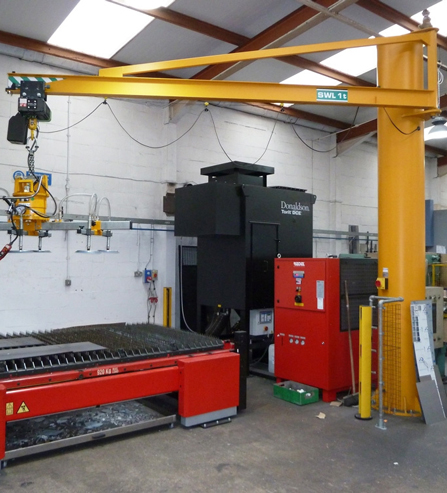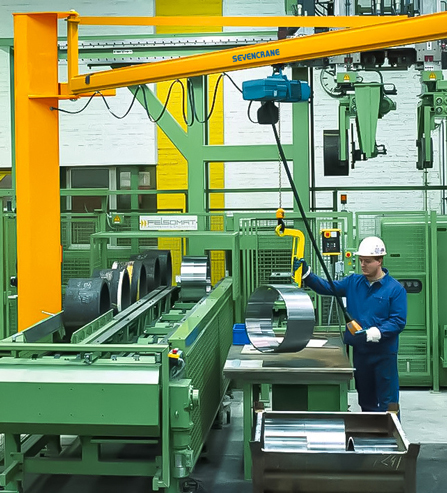Regular Inspection
Daily inspections are crucial to ensure the safe and efficient operation of a pillar jib crane. Before each use, operators should conduct a visual inspection of key components, including the jib arm, pillar, hoist, trolley, and base. Look for signs of wear, damage, or deformities. Check for any loose bolts, cracks, or corrosion, particularly in critical load-bearing areas.
Lubrication
Proper lubrication is essential for the smooth operation of moving parts and to prevent wear and tear. Daily, or as specified by the manufacturer, apply lubricant to the rotating joints, bearings, and other moving parts of the crane. Ensure that the hoist’s wire rope or chain is adequately lubricated to prevent rust and ensure smooth lifting and lowering of loads.
Hoist and Trolley Maintenance
The hoist and trolley are critical components of the pillar jib crane. Regularly inspect the hoist’s lifting mechanism, including the motor, gearbox, drum, and wire rope or chain. Check for signs of wear, fraying, or damage. Ensure that the trolley moves smoothly along the jib arm without any obstructions. Adjust or replace parts as necessary to maintain optimal performance.
Electrical System Check
If the crane is electrically operated, perform a daily check of the electrical system. Inspect the control panels, wiring, and connections for signs of damage, wear, or corrosion. Test the operation of the control buttons, emergency stop, and limit switches to ensure they are functioning correctly. Any issues with the electrical system should be addressed immediately to prevent malfunctions or accidents.


Cleaning
Keep the crane clean to ensure it operates efficiently and to extend its lifespan. Remove dust, dirt, and debris from the crane components, especially from moving parts and electrical components. Use appropriate cleaning agents and tools to avoid damaging the crane’s surfaces or mechanisms.
Safety Checks
Conduct daily safety checks to ensure all safety devices and features are operational. Test the overload protection system, emergency stop buttons, and limit switches. Ensure that safety labels and warning signs are clearly visible and legible. Verify that the crane’s operational area is clear of obstacles and that all personnel are aware of safety protocols.
Record Keeping
Maintain a log of daily inspections and maintenance activities. Document any issues found, repairs made, and parts replaced. This record helps in tracking the crane’s condition over time and planning preventive maintenance activities. It also ensures compliance with safety regulations and manufacturer’s recommendations.
Operator Training
Ensure that crane operators are properly trained and aware of daily maintenance routines. Provide them with the necessary knowledge and tools to perform basic maintenance tasks. Regular training sessions can help operators stay updated on best practices and safety procedures.
Regular daily maintenance and upkeep of pillar jib cranes are vital for ensuring their safe and efficient operation. By adhering to these practices, you can maximize the crane’s lifespan, minimize downtime, and enhance overall workplace safety.
Post time: Jul-16-2024









